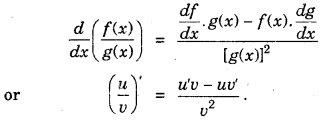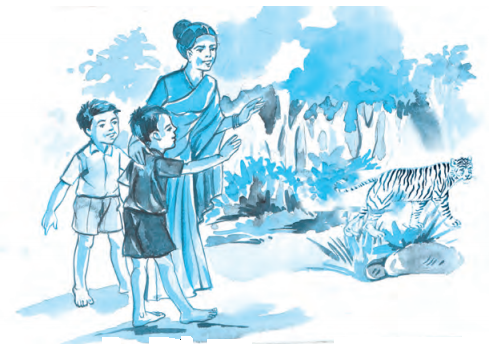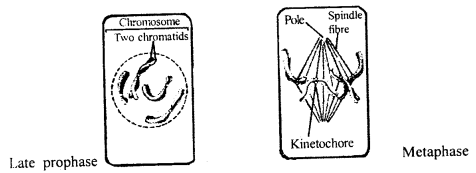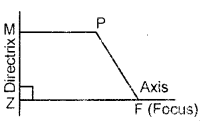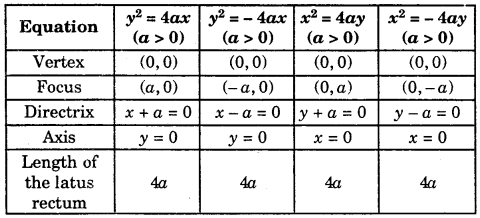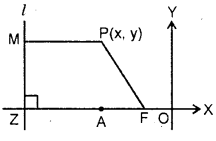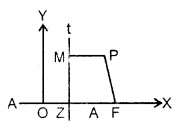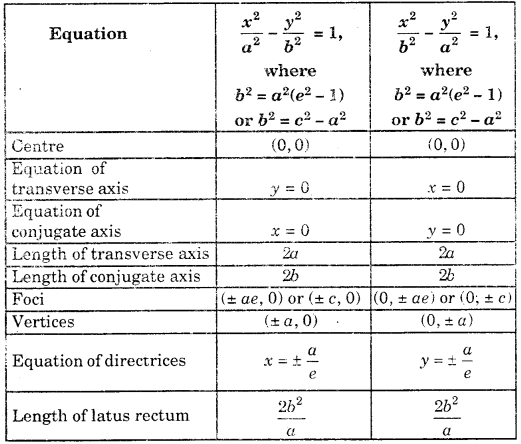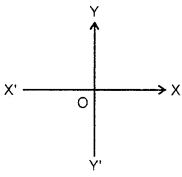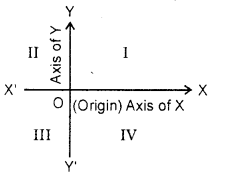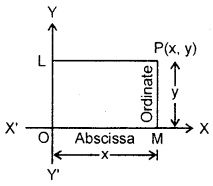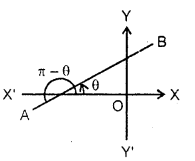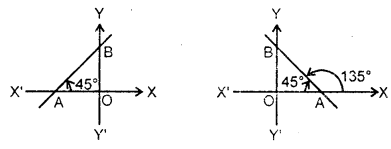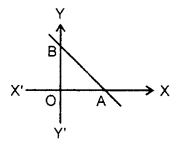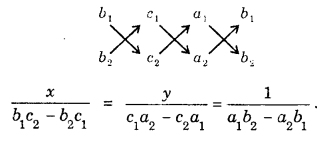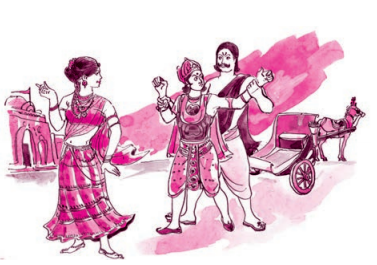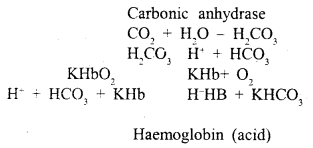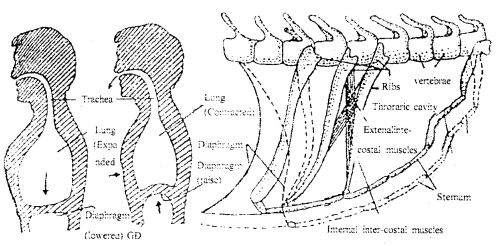Here we are providing Class 11 Biology Important Extra Questions and Answers Chapter 5 Morphology of Flowering Plants. Important Questions for Class 11 Biology are the best resource for students which helps in Class 11 board exams.
Class 11 Biology Chapter 5 Important Extra Questions Morphology of Flowering Plants
Morphology of Flowering Plants Important Extra Questions Very Short Answer Type
Question 1.
What do you mean by morphology?
Answer:
Morphology refers to external structures.
Question 2.
What are the hanging roots of a banyan tree called?
Answer:
Prop roots
Question 3.
In which type of plants, the primary root is short-lived and is replaced by a large number of roots?
Answer:
Monocotyledonous
Question 4.
Name one plant which has a fibrous root system.
Answer:
Wheat plant
Question 5.
Name one plant which has adventitious roots?
Answer:
Banyan
Question 6.
What is a root cap?
Answer:
The root is covered at the apex by a thimble-like structure called the root cap.
Question 7.
Name the region a few millimetres above the root cap?
Answer:
Region of meristematic activity.
Question 8.
What is the function of root hairs?
Answer:
To absorb water and minerals from the soil.
Question 9.
Name two plants whose taproots store food.
Answer:
Carrot and turnip
Question 10.
Name one plant whose roots come out of the ground and grow vertically upwards.
Answer:
Rhizophora.
Question 11.
What are pneumatophores?
Answer:
Roots which help to get oxygen for respiration.’
Question 12.
Which part of the plant bears nodes and internodes?
Answer:
Stem
Question 13.
Name the region of the stem where leaves are born.
Answer:
Nodes
Question 14.
What is the portion between two nodes called?
Answer:
Internode
Question 15.
Name two plants whose stems are modified to store food in them.
Answer:
Potato and ginger.
Question 16.
Name two plants whose stems are modified into woody, straight and pointed thorns.
Answer:
Citrus and Bougainvillea.
Question 17.
What is a leaf?
Answer:
The leaf is a lateral, generally flattened structure borne on the stem.
Question 18.
Name the three main parts of a leaf.
Answer:
Leaf base, Petiole and Lamina.
Question 19.
What is the relation?
Answer:
The arrangement of veins and the veinlets in the lamina of the leaf is termed venation.
Question 20.
Name the two types of compound leaves.
Answer:
(a) Pinnately compound leaf
(b) Palmately compound leaf,
Morphology of Flowering Plants Biology Important Extra Questions Short Answer Type
Question 1.
What are the functions of the root system?
Answer:
The main functions of the root system are as follows:
(a) Absorption of water and minerals from the soil.
(b) To provide a proper anchorage to the plant parts.
(c) To store reserved food material
(d) Synthesis of plant growth regulators.
Question 2.
Write a note on different types of root systems.
Answer:
(a) In most of the dicotyledonous plants, the direct elongation of the radicle leads to the formation of primary roots which grows inside the soil. The primary roots and their branches constitute the taproot system. For example-mustard plant.
(b) In monocotyledonous plants the primary root is short-lived and is replaced by a large number of roots. Their roots originate from the base of the stem and constitute the fibrous root system. For example wheat plant.
(c) In some plants, roots arise from parts of the plant other than the radicle. Such roots are called adventitious roots. For example grass, banyan tree etc.
Question 3.
Write a short note on the stem.
Answer:
The stem is the ascending part of the axis bearing branches leaves, flowers and fruits. It develops from the plumule of the embryo of a germinating seed. The stem bears nodes and internodes. The region of the stem where leaves are born is called nodes while the portion between two nodes is called an internode. The stem is generally green when young and later becomes woody and dark brown.
Question 4.
What are the main functions of the stem?
Answer:
The main functions of stem are as follows:
(a) Spreading out branches bearing leaves, flowers and fruits.
(b) To conduct water, minerals and photosynthates.
(c) Some stems perform the function of storage of food, support, protection and vegetative propagation.
Question 5.
Describe the main parts of a leaf.
Answer:
The leaf consists of three main parts-leaf base, petiole and lamina.
(a) Leaf base: The leaf is attached to the stem by the leaf base.
(b) Petiole: The petiole help hold the blade to light.
(c) Lamina: It is the green expanded part of the leaf with veins and veinlets.
Question 6.
What are the functions of petiole and lamina?
Answer:
Functions of petiole:
(a) The petiole helps hold the blade to light.
(b) It allows leaf blades to flutter in wind, thereby cooling the leaf and bringing fresh air to the leaf surface.
Functions of Lamina
(a) The veins of the lamina provide rigidity to the leaf blade
(b) It acts as channels of transport for water, minerals and food materials.
Question 7.
What do you mean by venation?
Answer:
The arrangement of veins and the veinlets in the lamina of the leaf is termed venation. The veinlets in the form of a network are termed reticulate and when the veins run parallel to each other within a lamina, the venation is termed as parallel. Dicotyledonous plants generally possess reticulate venation while monocotyledonous generally possess parallel venation.
Question 8.
Explain the two types of compound leaves.
Answer:
The two types of compound leaves are:
(a) Pinnately compound leaf: In which a number of leaflets are present on a common axis, the rachis, which represents the midrib of the leaf as in neem.
(b) Palmately compound leaves: The leaflets are attached at a common point, i.e., at the tip of the petiole, as in silk cotton.
Question 9.
What do you mean by phyllotaxy?
Answer:
The pattern of arrangement of leaves on the stem or branch is termed phyllotaxy.
It is usually of three types:
(a) Alternate: A single leaf arises at each node in an alternate manner, as in a china rose.
(b) Opposite: A pair of leaves arise at each node and lie opposite to each other as in calotropis and guava plants.
(c) Whorled: When more than two leaves arise at a node and form a whorl, as in Alstonia.
Question 10.
What are the functions of leaves?
Answer:
(a) Photosynthesis
(b) Some leaves are converted into tendrils for climbing as in peas.
(c) Some leaves are converted into spines for defence as in cacti
(d) Some leaves store food as in onion and garlic.
Question 11.
What is inflorescence? Name two types of inflorescences.
Answer:
The arrangement of flowers on the floral axis is termed an inflorescence
Types of inflorescences:
(a) Racemose: In racemose the main axis continues to grow, the flowers are borne laterally in acropetal succession.
(b) Cymose: In the cymose type of inflorescence, the main axis terminates in a flower. The flowers are borne in a basipetal order.
Question 12.
What is a flower?
Answer:
The flower is the reproductive unit in the angiosperms. It is meant for sexual reproduction. A typical flower has four different kinds of whorls arranged successively on the swollen end of the stalk or pedicel called the thalamus. The different kinds of whorls are calyx, corolla, androecium and gynoecium. The androecium and gynoecium are reproductive organs while calyx and corolla are accessory organs.
Question 13.
Write a note on the symmetry of a flower.
Answer:
The flower may be actinomorphic (radical symmetry) or zygomorphic (bilateral symmetry) in symmetry.
(a) Actinomorphic: When a flower can be divided into two equal radical halves in any radical plane passing through the centre, it is said to be actino-morphic, e.g., mustard, datura, chilli.
(b) Zygomorphic: When a flower is divided into two similar halves only in one particular vertical plane, it is said to be zygomorphic, e.g., pea, bean, cassia.
Question 14.
Write a short note on the fruit.
Answer:
Fruit is a natural or ripened ovary, developed after fertilization.
Fruit is called a parthenocarpic fruit if it is formed without fertilization of the ovary.
The fruit consists of a wall or pericarp and seeds. The pericarp may be dry or fleshy. If the pericarp is thick and fleshy, it is differentiated into the outer part called epicarp, a middle part called mesocarp and an inner part called the endocarp.
Question 15.
Write a note on the structure of a dicotyledonous seed.
Answer:
The outermost covering of a seed is called the seed coat. The seed coat has two layers, the outer testa and the inner tegmen. The developing seeds are attached to the fruit by means of a scar called the hilum, on the seed coat. A small pore called the micropyle is situated above the hilum. In the inner region of the seed coat is the embryo, consisting of an embryonal axis and two cotyledons. The cotyledons are fleshy and full of reserve food materials. At the end of the embryonal axis are present the radicle and the plumule.
Morphology of Flowering Plants Biology Important Extra Questions Long Answer Type
Question 1.
Write a note on the regions of the root.
Answer:
At the apex, the root is covered by a thimble-like structure called the root cap. The root cap protects the tender apex of the root as it penetrates the soil. A few millimetres above the root cap is the region of meristematic activity. The cells present in this region are very small, thin-walled and with dense protoplasm.
The cells proximal to this region undergo rapid elongation and enlargement and are also responsible for the growth of the root in length. This region is called the region of elongation. The cells of this region gradually differentiate and mature. This zone proximal to the region of elongation is called the region of maturation. Some epidermal cells, from this region, form very fine and delicate, thread-like structures called root hairs. The functions of these root hairs are to absorb water and minerals from the soil.
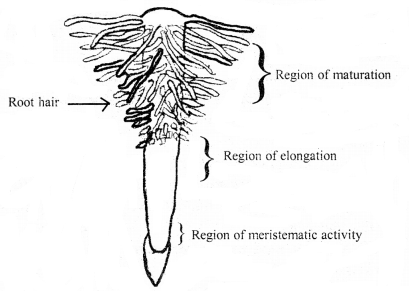
The regions of the root-tip
Question 2.
Write a note of different types of leaves and phyllotaxy.
Answer:
When the lamina of the leaf is entire or incised and the incisions do not touch the midrib, the leaf is said to be simple. A leaf is said to be compound when the incisions of the lamina reach up. to the midrib breaking it into a number of leaflets. In both simple and compound leaves a bud is present in the axil of the petiole. However, a bud is not present in the axil of leaflets of the compound leaf.
There are two types of compound leaves:
(a) Pinnately compound leaf
(b) Palmately compound leaf
In a pinnately compound leaf, a number of leaflets are present on a common axis, the rachis, which represents the midrib of the leaf. However in palmately compound leaves, the leaflets are attached at a common point,
i. e, the tip of the petiole.
Phyllotaxy refers to the pattern of arrangement of leaves on the stem or branch. Phyllotaxy is of three types alternate, opposite and whorled. A single leaf that arises at each node in an alternate manner is called alternate phyllotaxy, for example, as in china rose. When a pair of leaves arise at each node and lie opposite to each other it is called opposite phyllotaxy, for example in calotropis. If more than two leaves arise at a node and form a whorl it is called whorled phyllotaxy, as in Alstonia.
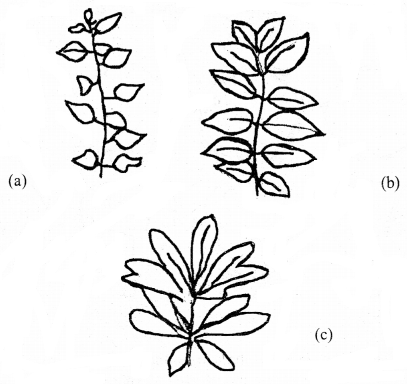
Different types of phyllotaxy: (a) Alternate (b) Opposite(c) Whorled
Question 3.
Write in details about a flower.
Answer:
A flower is a reproductive unit in the angiosperms. It is meant for sexual reproduction. Four different kinds of whorls are found in a flower. These are arranged successively on the swollen end of the stalk or pedicel, called the thalamus or receptacle.
These are calyx, corolla, androecium and gynoecium.
(a) Calyx: It is the outermost whorl of the flower and its members are called sepals. Mostly the sepals are green in colour, leaf-like and protect the flower in the bud stage. The calyx may be gamosepalous (in which sepals are united or polysepalous (in which sepals are free).
(b) Corolla: It is composed of petals that are usually brightly coloured to attract insects for pollination. The shape of the corolla may be tubular, bell-shaped, funnel-shaped or wheel-shaped.
(c) Aestivation: The pattern of arrangement of sepals or petals in the floral bud with respect to the other members of the same whorl is known as aestivation. The main types of aestivation are valvate, twisted, imbricate and vexillary.
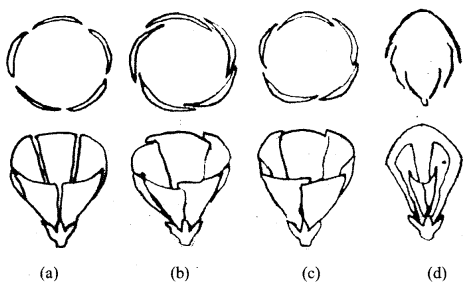
Types of aestivation in corolla: (a) Valvate (b) Twisted (c) Imbricate (d) Vexillary
(d) Androecium: It is composed of stamens which are male reproductive organs of a flower. Each stamen consists of a stalk or a filament and an anther. Each anther is usually bilobed. There are two chambers (pollen sacs) in each lobe. The pollen grains are produced in pollen sacs.
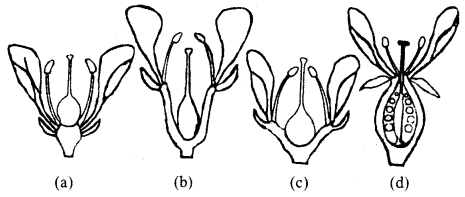
Position of floral parts on thalamus : (a) Hypogynous (b) and (c) Perigynous (d) Epigynous
(e) Gynoecium: It is the female reproductive part of the flower. It is made up of one or more carpels. A carpel consists of three parts ovary, stigma and style. The stigma is at the tip of the style and is the receptive surface for pollen grains. The ovary is an enlarged basal part. The style connects the ovary to the stigma. Each ovary bears one or more ovules attached to a flattened, cushion-like placenta.
A flower may be trimerous tetramerous or pentamerous when the floral appendages are in multiples of 3, 4 and 5 respectively.
The flowers are described as hypogynous perigynous and epigynous based on the position of calyx, corolla and androecium in respect of the ovary on the thalamus.



